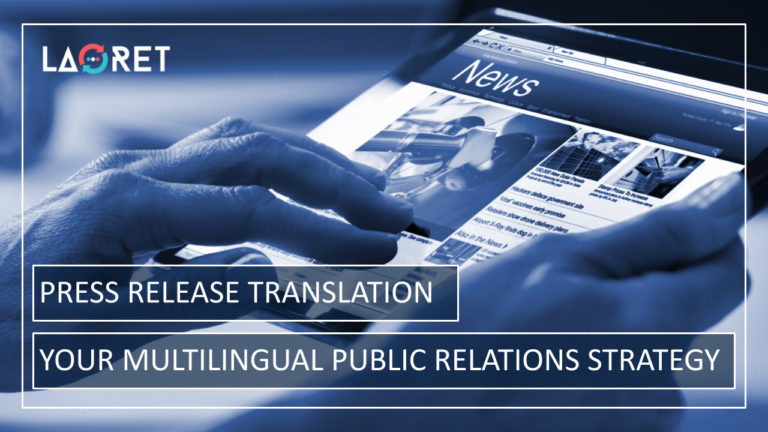Press Release Translation: Your Multilingual Public Relations Strategy
So, you have a new feature you are excited about or wish to communicate some service unique selling point that defines your business through a Press Release. But, what will you do if you want to expand into new markets and make your news go worldwide? This is where Press Release Translation comes in, the most crucial one for international business expansion and multilingual public relations (PR) strategies.
So why does Press Release Transition matter so much? What exactly does this service entail? And what are some of the best practices to make it work?
What Is A Press Release?
A Press Release is a piece of content written specifically to communicate important new information about your business. They are an essential promotional tool that can generate targeted interest in your business. In order to attract interest from the right crowds, press releases should be published in a magazine, newspaper, or website with a high readership in your niche.
By initiating press releases, you are telling the online communities that you are an active brand working on innovations and establishing yourself as a thought-leader. That is why, if your release focuses on a specific need in the market, press releases can also do wonders for SEO and can open you up to new clients as well as collaborative opportunities.
You may have guessed by the desirable effects that a press release can have, that not just anyone can write them. A good press release strikes an ideal balance between providing information and piquing interest, which is why qualified copywriters are commonly set the task of crafting a press release. And if you want to translate your press release, equally qualified experts will need to be engaged. But more on that later!
Why Press Release Translation Is Good For Business
Press releases are designed to tell an enticing story about your business. So, if you are planning on expanding your business into new markets, should you translate these press releases or not? Short answer, yes.
Think about why you want to write your initial press release in the source language. You want to raise brand awareness and perform a form of digital networking. So, when you are expanding internationally, it only makes sense that your local public relations strategy turns into a multilingual one. When applying press release translation, you will:
- Boost brand awareness on a global level.
- Get online coverage and improve international SEO strategies.
- Reach new markets effectively.
More on these points now!

The Essential Best Practices For Effective Press Release Translation
So, now let’s get down to the interesting part. What are the best practices for translating press releases? Following these to the letter will ensure the success of your translation in foreign markets!
Who Is Your Target Locale?
It all starts with clearly identifying your target on 2 levels. Firstly, you identify the region and language that will benefit from your product. And secondly, you identify the publications where this target locale is likely to explore unique options for themselves.
If you want to identify an interesting market, you can also go about in more ways than one. Users are providing you with information all the time, and it is your responsibility to develop a strategy around the data you receive. You can discern a lot from who is visiting you, from where, how often, and which pages they are interacting with the most.
For your website, you can keep a close eye on Google Analytics and Google Console, and use the data to make a list of the most interested parties. Alternatively, you can perform market research. This can also be a second step after analyzing your website visitors, in a bid to understand their commercial behavior better.
Understanding your new market is essential when it comes to shortlisting the publications you can contact with your press release. If you are a traveling brand looking to target the German market, for example, you will translate your press release into German and identify the most popular local platforms or channels for your type of travel.
Who Is Your Ideal Press Release Translator And How Can You Help Them Excel?
Press releases are not just simple pieces of text, they are written with purpose and hold specific industry-related information. That is why, in order to achieve the best translation, the linguist will need to be an in-country native with specific experience in marketing and copywriting, so local knowledge, as well as targeted expertise, are guaranteed.
In addition to that, it will be ideal if the translation has a background writing for your industry. But, with a specific content type such as a press release, you can’t just leave the ball entirely in your translator’s court. They may know your audience and know your industry, but in order to make the best translation decisions, they will also need to know your brand and what makes it unique, and which product or service you are offering. For this reason, consider the following points:
- Select an LSP that hires qualified linguists for each language. Remember, press release translation often is a creative process. By using more than one linguist, you enable a dialogue between experts.
- Provide your LSP with the source text, reference materials, and a creative brief. These will provide context and help their translators to understand your expectations and improve the project’s success significantly. You’ll always have some specific suggestions or guidelines to ensure that the output communicates with your own brand identity. So, make sure that you always communicate them with your translation partner. Need specifics on what is included in a creative brief and which exact elements are included? Check out our blog “What Is Transcreation And How Is It Best Managed?â€
- Do you want your press release translation to rank well? Then you may also want to consult your Language Service Provider (LSP) on international SEO strategies. When you are optimizing for International SEO, you are making your multilingual website easy to detect by Google and other Search Engines in terms of language, country, and user intent. The correct set of multilingual keywords will need to be incorporated with a keen eye on both linguistic and cultural integrity. Learn more in our blog “How To Apply International SEO To Your Multilingual Web Contentâ€!
This Is What The Ideal Press Release Translation Process Looks Like!
For linguistic accuracy, your content will follow a Translation, Editing, Proofreading (TEP) Process to ensure accuracy. But of course, you are simply translating for a certain language, you are translating for a culture. And this is where localization comes in!
When localizing for a specific culture, the language will need to be adapted to the exact locale, but also other elements need to be taken into account, such as:
- Selecting effective and appropriate images and graphics, if needed.
- Leveraging unique cultural perspectives and events such as local customs and holidays, but also making sure that no offense is caused.
- Adapting the layout exactly to meet the original standards and, if need be, the translated version. This is important if you are, for example, translating into Right-To-Left languages such as Arabic. For this, Desktop Publishing Services will be included.
- Converting units, currency, measurements, dates, addresses, and so on, to local standards.
- Making sure local regulations and legal requirements are met.
- If you are launching a press release in a certain region, make sure you also have your website localized into the target language! Otherwise, your users will be motivated to visit your website, and yet have no information especially designed for them available.
- So, what about your brand name? It is possible that you intend to expand into specific markets where the name might not mean much or perhaps might even cause offense, it is best to check with local experts what your trademark will mean to your soon to be conquered market. Read our blog on “Brand Name Validation: Is Your Brand Ready For The Global Stage?†for more information!
Conclusion
Press Release Translation is a smart and effective multilingual PR strategy worth pursuing. But like with any translation and localization service, you have to do it well. Make sure all the best practices are followed, and that you engage with native, in-country subject-matter experts exclusively, and understand which service will suit your needs best!
At Laoret, we hire only native, in-country professionals with experience in providing press release translations where creativity and cultural potency are prioritized. We possess expertise in localization as well as transcreation services and are open to advising you on exactly which service you need to succeed internationally. Reach out to us! We are available 24/7.






